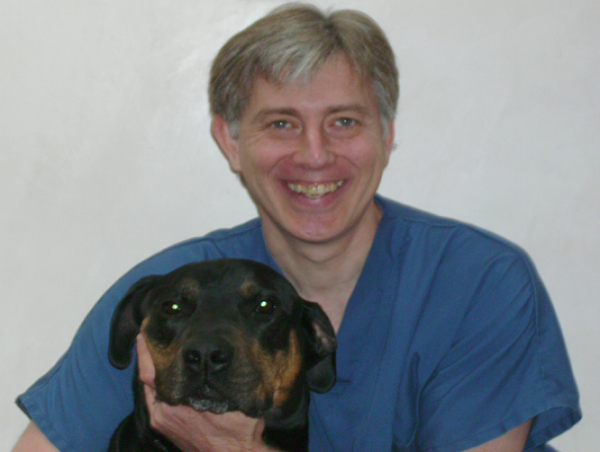Dr. Eugene Aversa: Discusses Innovative Pet Handling Techniques to Minimize Pet Stress and Maximize Efficiency
NEW YORK, NEW YORK, UNITED STAETS, March 26, 2024 /EINPresswire.com/ -- Dr. Eugene Aversa, a dedicated small animal veterinarian, unveils some basic strategies aimed at minimizing pet stress while facilitating a safe and effective veterinary experience. With over two decades of expertise, Dr. Aversa champions a compassionate and holistic approach to ensure the well-being of every furry patient.
As pets exhibit a myriad of behaviors during hospital visits, Dr. Aversa recognizes the importance of tailoring handling techniques to suit individual needs, ultimately fostering a safe and stress-free environment. From exuberant dogs to aloof cats and even feral felines, each encounter demands a unique approach for optimal outcomes.
"Dogs and cats communicate in many ways, and body language can differ greatly between them. It is our responsibility to understand what they are telling us and to respond to their needs effectively," says Dr. Aversa, reflecting on his commitment to enhancing the veterinary experience.
Understanding Canine Behavior
For the exuberant dogs bursting with enthusiasm, Dr. Aversa employs techniques to maintain their excitement at manageable levels. Right from the start, the energy in the room needs to be brought down. Friendly greetings are offered but with softer speech and slower handling. Sometimes pup parents are asked to bring their excitement levels down as well, as pets pick up on environmental cues rapidly.
Strategic distractions such as spray cheese, peanut butter, or other treats will often keep them pre-occupied while a physical exam or blood draw is occurring. For many dogs, these simple and gradual acclimatization techniques facilitate a positive experience for both pet and practitioner.
Conversely, anxious or aggressive dogs require a more delicate approach. Dr. Aversa will often stand at the exam room door while softly speaking to the client from a distance. This allows the dog the opportunity to further assess and relax to the situation. He will also gently toss a treat on the floor in the direction of the dog which many see as a sign of good will.
Sometimes, however, these techniques are not enough. In such cases, the client is asked to give a mild sedative prior to a rescheduled appointment. Trazodone, with or without gabapentin, is commonly used to good effect. It usually provides just enough relaxation to facilitate a low-stress and safe exam.
If this is still not sufficient, injectable sedation is utilized. For these dogs, it is the least stressful and most efficient method of all.
Navigating Feline Temperaments
Navigating the enigmatic nature of cats presents its own set of challenges, from confident felines to fiercely defensive ones. Being able to read their body language is vital to successful handling.
Dr. Aversa emphasizes that many of the same approaches used for dogs are effectively utilized in cats as well. The exception being that cats are usually less persuaded by treats. Instead, a bath towel with pheromone spray (kitty scent) and a gentle scuff often goes a long way. Sometimes, the towel is used to wrap part of the cat to facilitate the handling of another part. This is widely referred to as a “kitty burrito” and is another handy tool that many cats tolerate well.
Like with dogs, however, some cats will need further convincing. Clients will be asked to give gabapentin prior to a rescheduled visit. Often, this makes all the difference. But in some cases, injectable sedation can work wonders and facilitates a low stress and effective experience for all.
Even feral cats, initially perceived as untamable, receive compassionate care under Dr. Aversa's guidance. Through gradual interactions, quiet reassurance, and, when needed, sedation, these animals are provided with the necessary care while respecting their unique behavioral traits.
Pet Handling Take Home
Dr. Aversa highlights the dynamic nature of animal behavior, emphasizing the need for continual assessment and adaptation of handling methods. By closely monitoring the pet's response, practitioners must adjust their approach to ensure comfort and safety throughout the veterinary visit. In other words, animal handling is dynamic and not static, and the approach can change over time and even rapidly. In all cases, Dr. Aversa emphasizes the importance of patience and empathy.
A Lifelong Commitment to Compassionate Care
Dr. Eugene Aversa's unwavering dedication to animal welfare and compassionate care underscores his profound belief that every veterinary encounter is an opportunity to serve. With a comprehensive understanding of animal behavior and innovative handling techniques, Dr. Aversa continues to exemplify excellence in small animal veterinary medicine.
"For me, veterinary medicine is not just a profession—it's a lifelong calling to be of service to the animals and the people who cherish them," says Dr. Aversa, reflecting on his enduring passion for his work.
About Dr. Eugene Aversa, DVM:
Dr. Eugene Aversa is a seasoned General Practice Small Animal Veterinarian with a profound commitment to animal welfare and compassionate care. Graduating from the Ohio State University in 1998 with a Doctorate of Veterinary Medicine, Dr. Aversa has amassed over twenty-five years of experience in conventional diagnostics, medicine, surgery, and anesthesia.
Throughout his career, he has remained steadfast in his commitment to holistic case management and open communication with clients, ensuring the highest level of care for every patient.
Jon Smith
News Live
email us here
![]()




_02_05_2025_05_53_40_418159.jpg)

